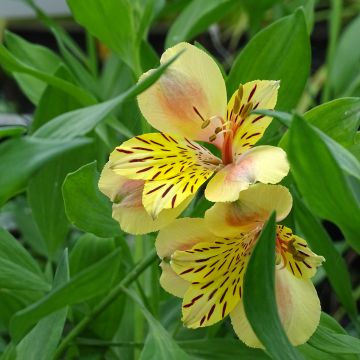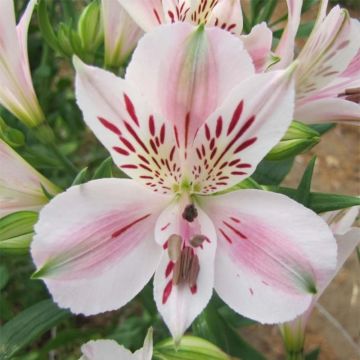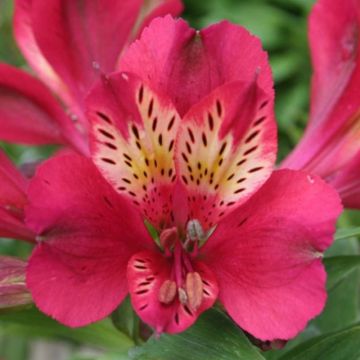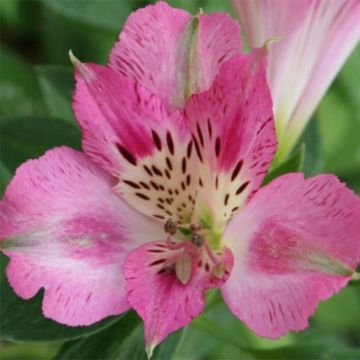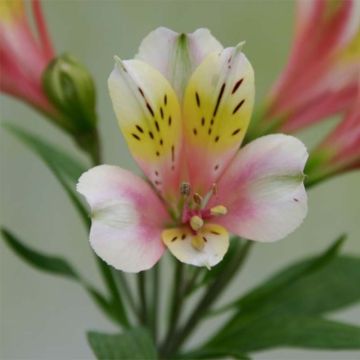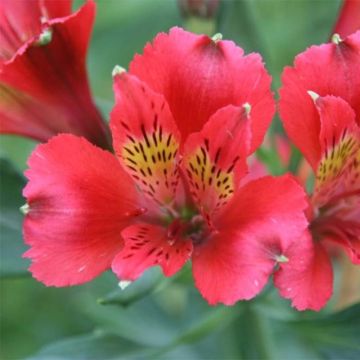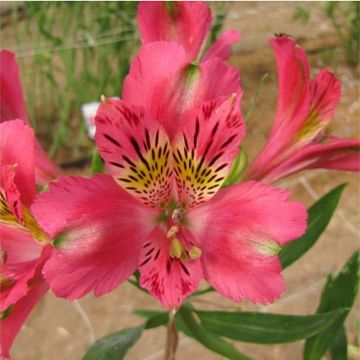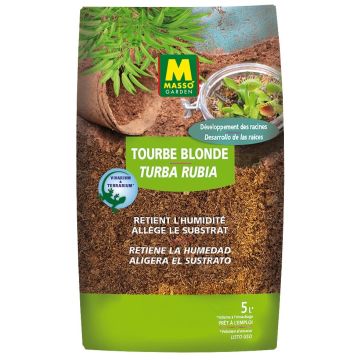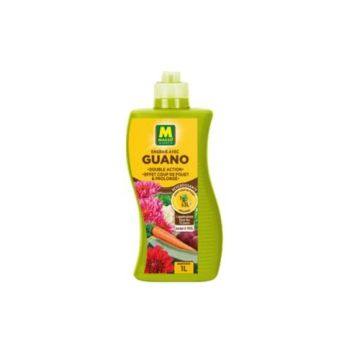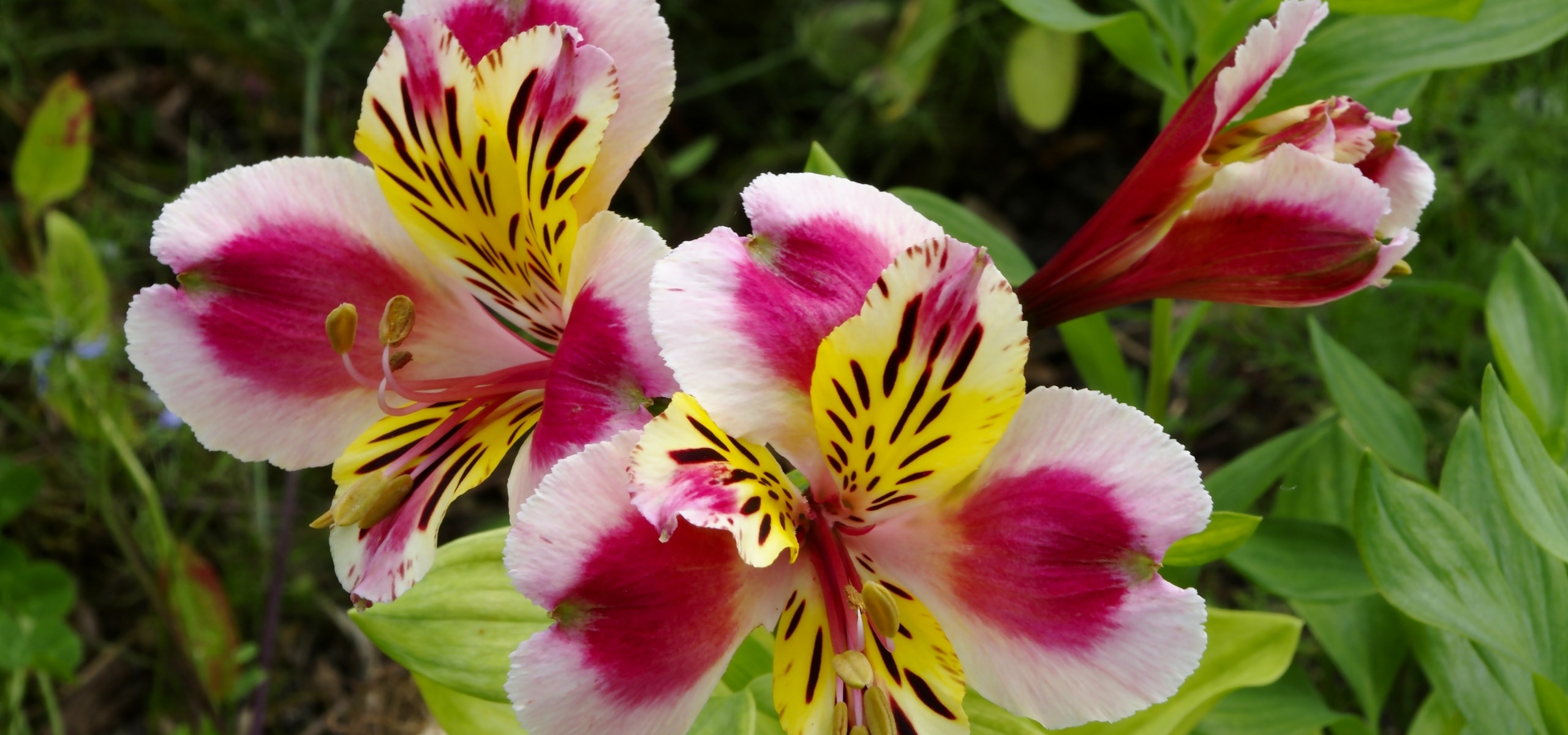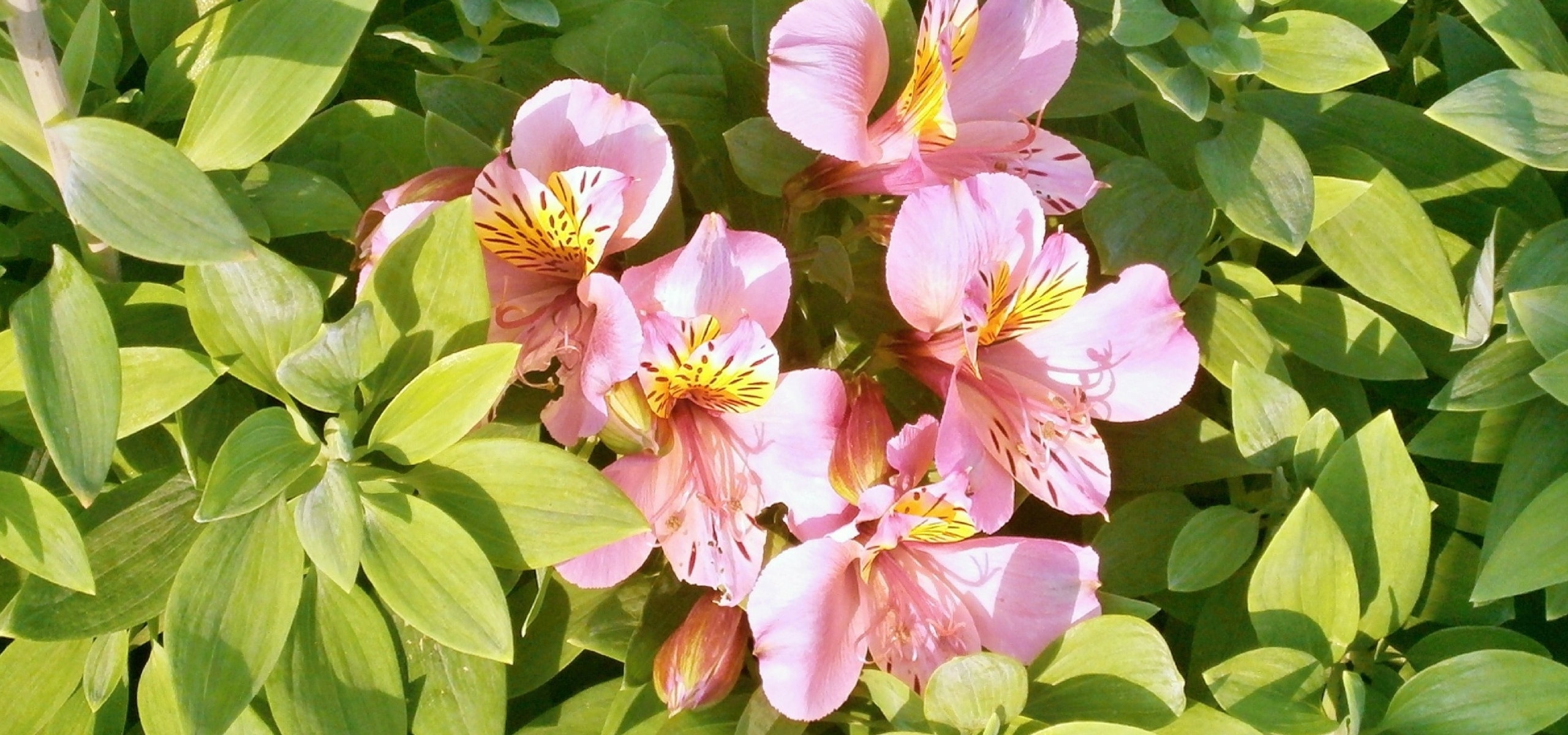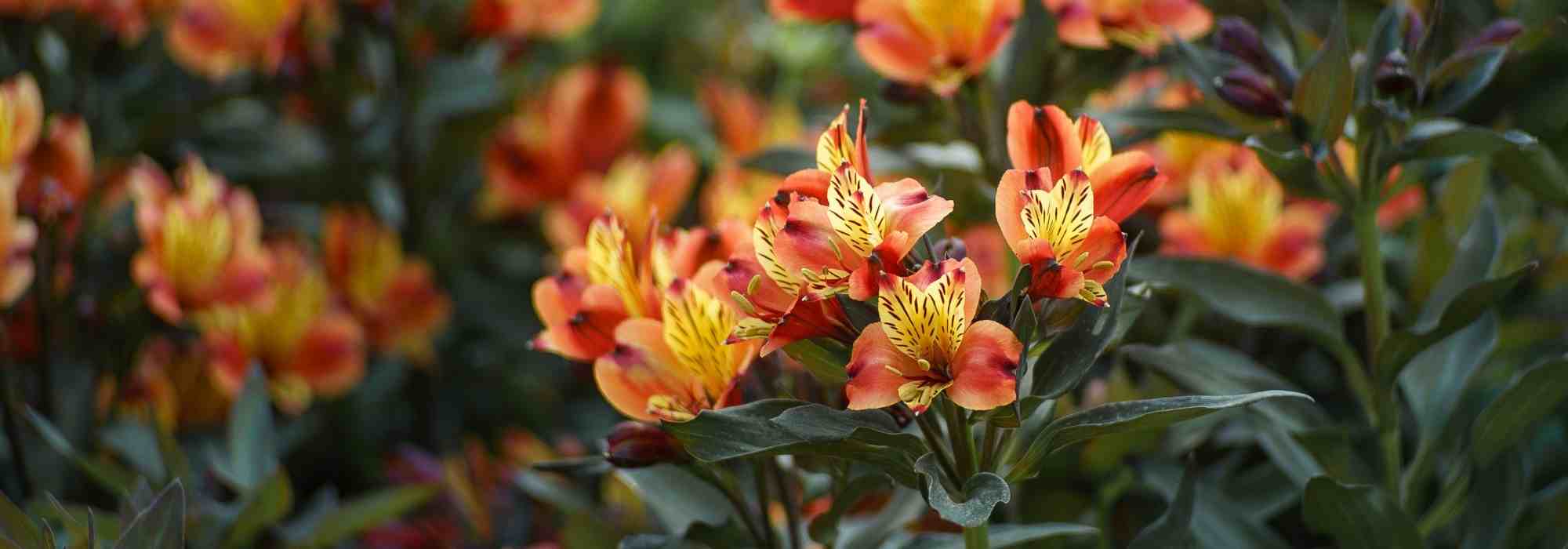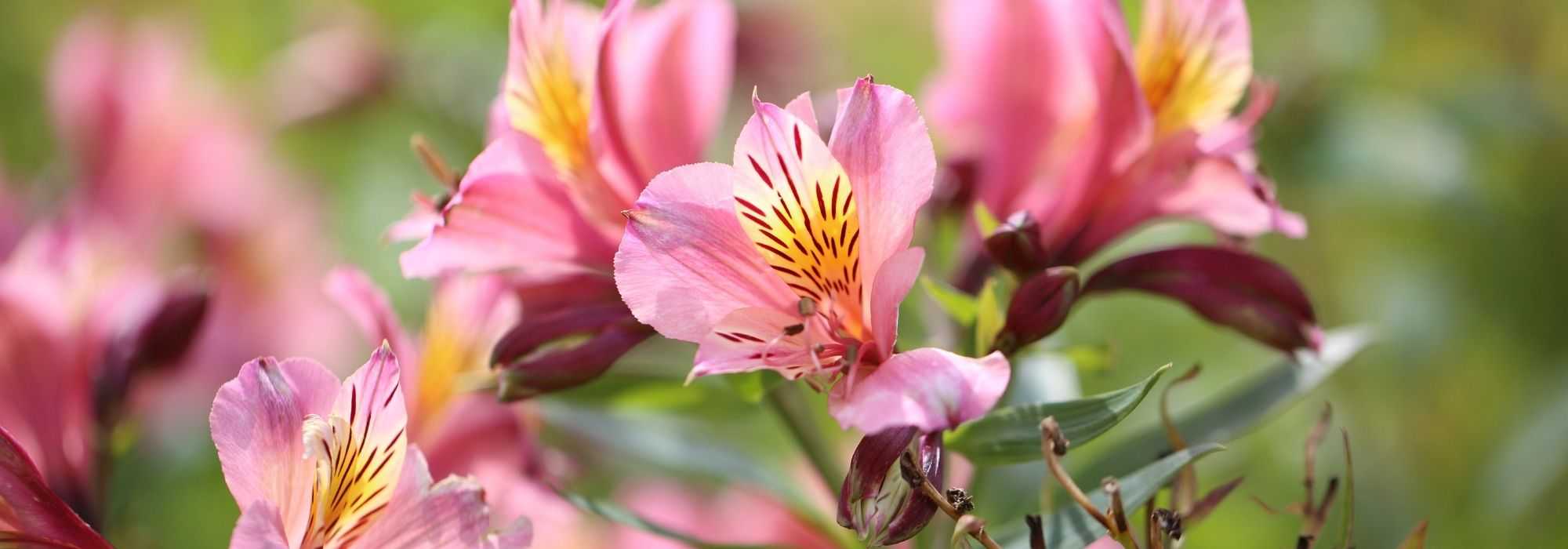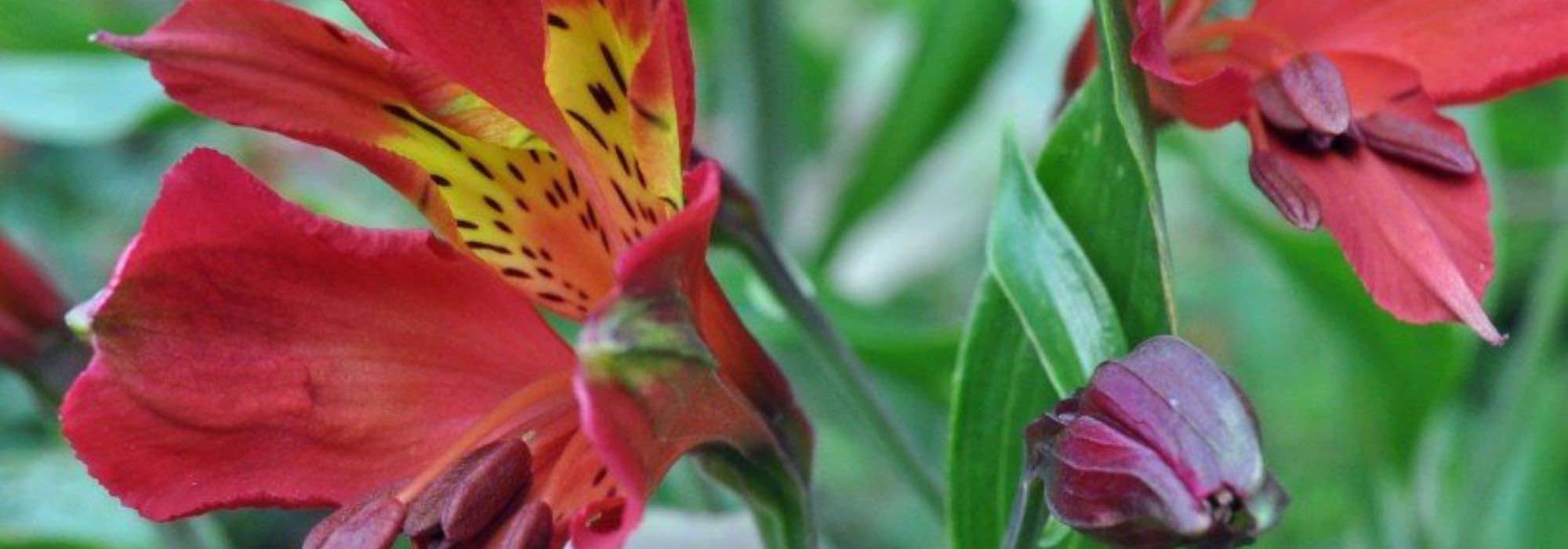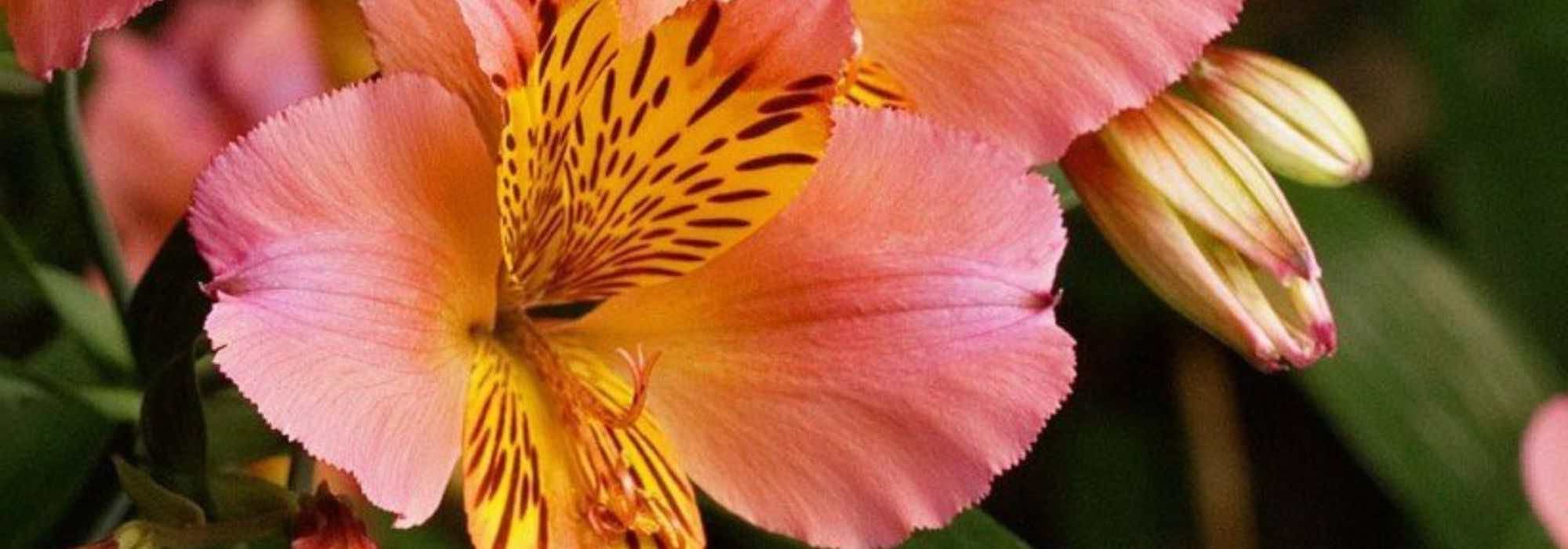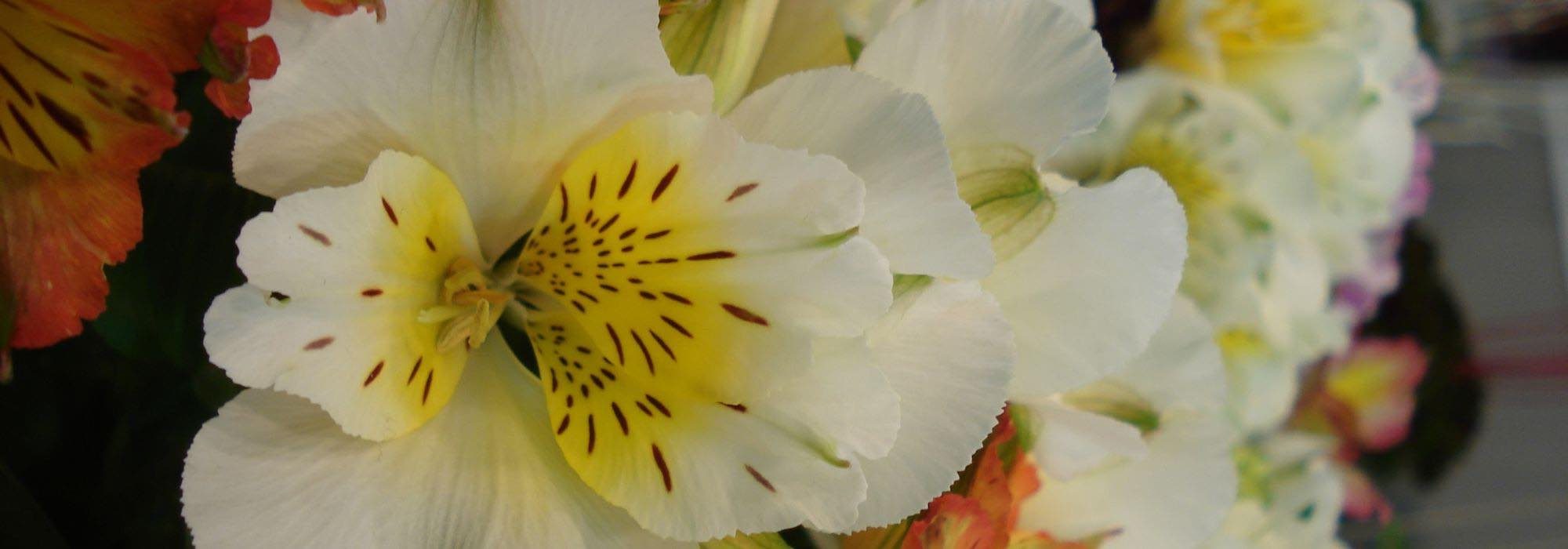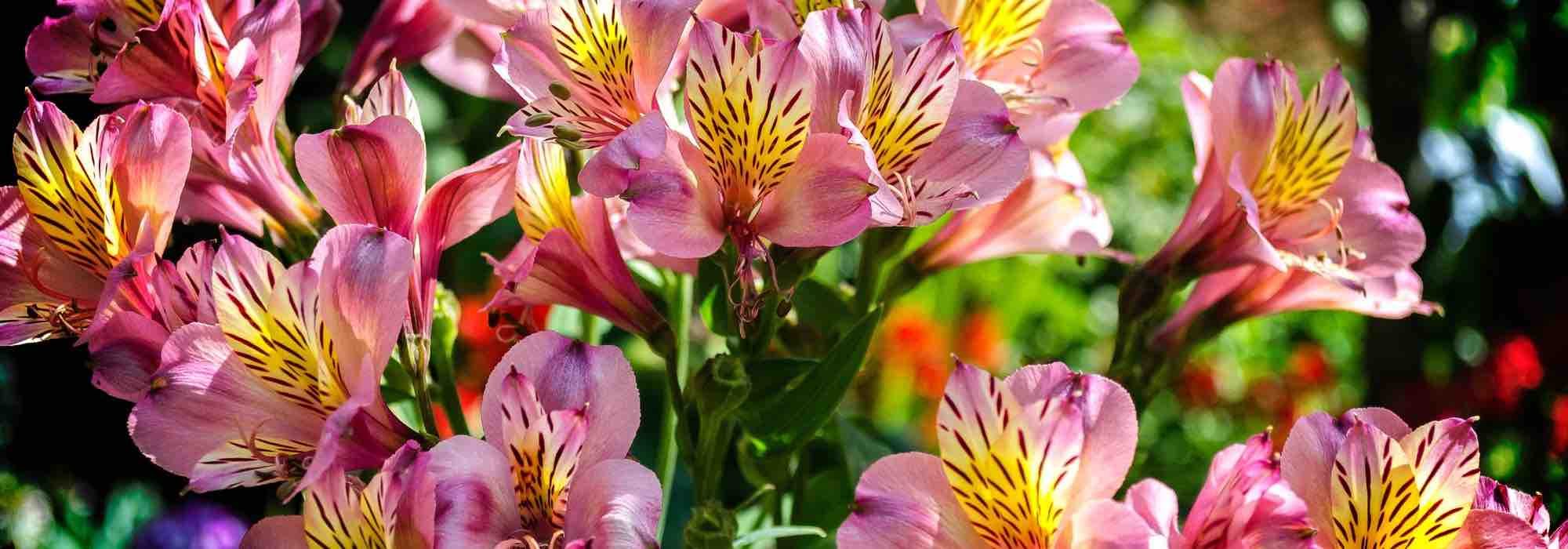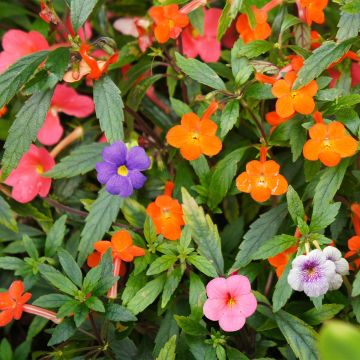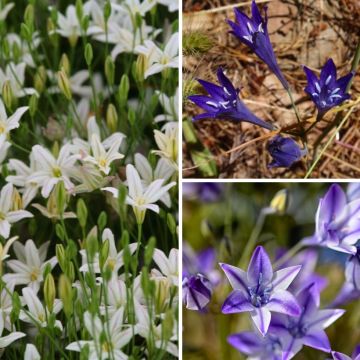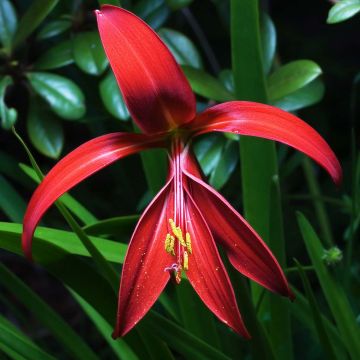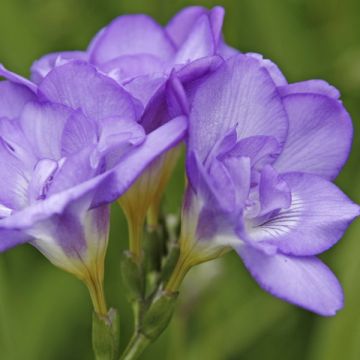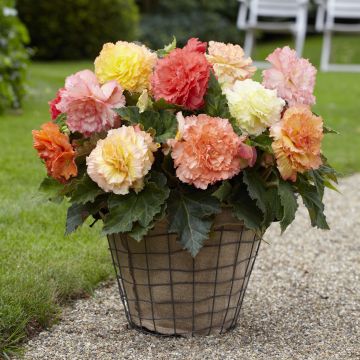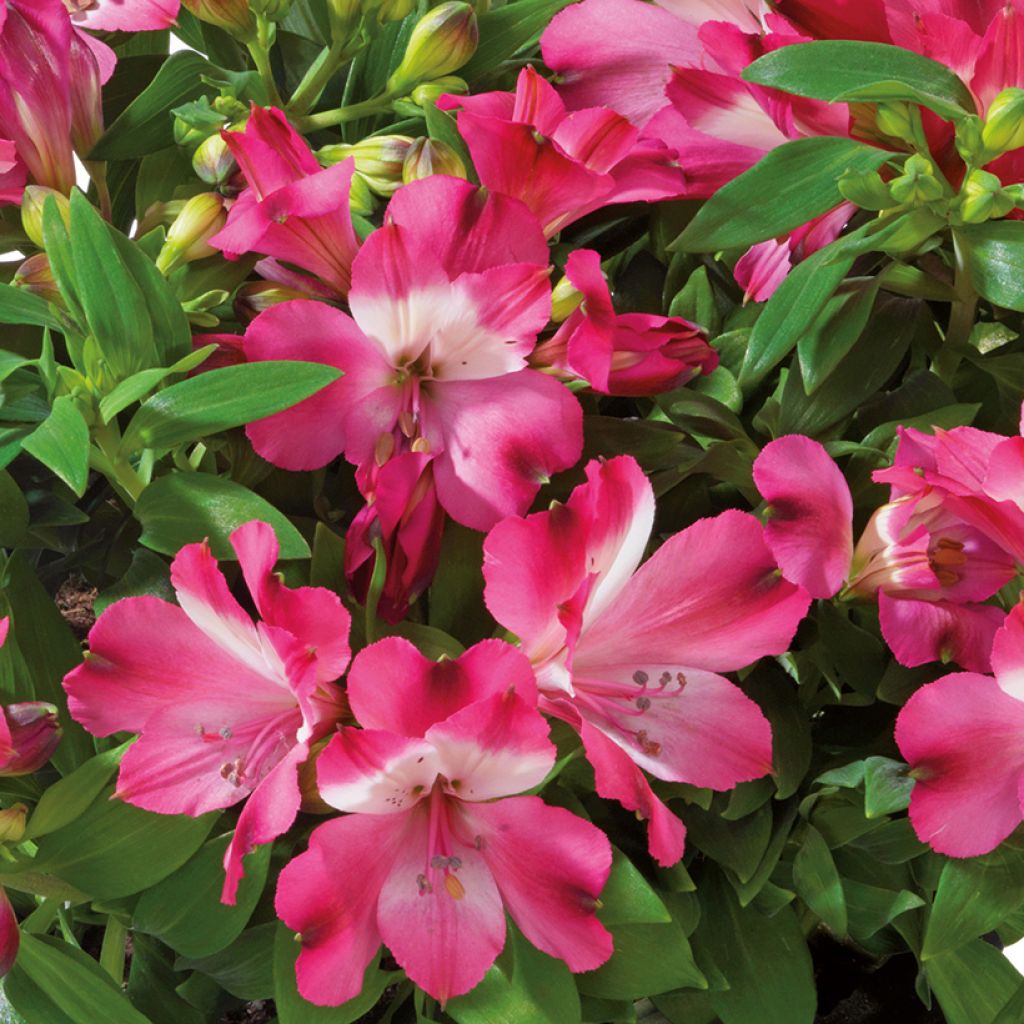

Alstroemeria Inticancha Romance - Peruvian lily
Alstroemeria Inticancha Romance - Peruvian lily
Alstroemeria Inticancha Romance
Peruvian Lily, Lily of the Incas
Perfect
Muriel , 01/06/2025
Special offer!
Receive a €20 voucher for any order over €90 (excluding delivery costs, credit notes, and plastic-free options)!
1- Add your favorite plants to your cart.
2- Once you have reached €90, confirm your order (you can even choose the delivery date!).
3- As soon as your order is shipped, you will receive an email containing your voucher code, valid for 3 months (90 days).
Your voucher is unique and can only be used once, for any order with a minimum value of €20, excluding delivery costs.
Can be combined with other current offers, non-divisible and non-refundable.
Home or relay delivery (depending on size and destination)
Schedule delivery date,
and select date in basket
This plant carries a 6 months recovery warranty
More information
We guarantee the quality of our plants for a full growing cycle, and will replace at our expense any plant that fails to recover under normal climatic and planting conditions.
Does this plant fit my garden?
Set up your Plantfit profile →
Description
Alstroemeria Inticancha® Romance is a compact and exceptionally floriferous variety of Peruvian Lily. Its vibrant and bright, fuchsia pink flowers with white throats bloom continuously from June to October. The very dense plant has low, sturdy stems that withstand rain and wind well. A perennial but not very hardy, it is a perfect variety for flowering pots.
Alstroemeria Inticancha® Romance belongs to a series of recent hybrids characterised by a low, compact habit and a very long flowering period from June to October. They are not very hardy (-5/-8°C depending on the variety), but make excellent seasonal plants and produce lovely cut flowers.
The 'Romance' variety, like almost all plants in the Inticancha® series, is particularly easy to grow in good horticultural compost. The plant forms bushy clumps within a few months, with leafy stems reaching 30 to 40 cm in height when in flower, and 30 cm in width. Flowering continues non-stop from summer to autumn. The very open flowers are gathered in clusters at the ends of the stems. They consist of fuchsia pink petals marbled with white. Each plant can produce at least 30 flowers. The foliage is arranged on the upper part of the stems. Leaves and stems disappear in winter, leaving only the underground tuber with fleshy roots. This is sensitive to transplant shock, especially in older plants, so it is not advisable to move it once established.
Alstroemeria Inticancha® 'Romance' is a stunning variety, ideal for decorating balconies and terraces. It forms a flowering bouquet that rivals the brilliance of Ivy-leaved Geranium, the King of Balconies. In borders, this plant pairs well, for example, with other varieties from the Inticancha series ('Passion', 'Moon', Maya) but also with ornamental grasses like Stipa tenuifolia. It also makes for opulent romantic bouquets.
Note: Please be aware that our plug plants are products intended for experienced gardeners. Upon receipt, transplant and store them under cover (conservatory, greenhouse, cold frame...) at a temperature above 14°C for a few weeks before planting them outdoors once the risk of frost has completely passed.
Flowering
Foliage
Plant habit
Botanical data
Alstroemeria
Inticancha Romance
Alstroemeriaceae
Peruvian Lily, Lily of the Incas
Cultivar or hybrid
Other Alstroemerias
View all →Planting and care
Alstroemeria Inticancha Romance should be planted in spring, choosing a sunny or partially shaded spot in light, well-drained, fairly rich soil that is low in lime and neutral to slightly acidic. They appreciate regular watering to support their flowering in summer. These plants are somewhat hardy, tolerating temperatures down to -5 or -8°C, provided the soil remains dry in winter. You can protect the crown with a thick mulch of leaves or fern fronds in autumn. Slugs are particularly fond of young shoots, so take care to protect them. Growing in pots allows you to shelter the young plants from frost by storing them in a bright, airy, and minimally heated space.
Planting period
Intended location
Care
Planting & care advice
-
, onOrder confirmed
Reply from on Promesse de fleurs
Similar products
Haven't found what you were looking for?
Hardiness is the lowest winter temperature a plant can endure without suffering serious damage or even dying. However, hardiness is affected by location (a sheltered area, such as a patio), protection (winter cover) and soil type (hardiness is improved by well-drained soil).

Photo Sharing Terms & Conditions
In order to encourage gardeners to interact and share their experiences, Promesse de fleurs offers various media enabling content to be uploaded onto its Site - in particular via the ‘Photo sharing’ module.
The User agrees to refrain from:
- Posting any content that is illegal, prejudicial, insulting, racist, inciteful to hatred, revisionist, contrary to public decency, that infringes on privacy or on the privacy rights of third parties, in particular the publicity rights of persons and goods, intellectual property rights, or the right to privacy.
- Submitting content on behalf of a third party;
- Impersonate the identity of a third party and/or publish any personal information about a third party;
In general, the User undertakes to refrain from any unethical behaviour.
All Content (in particular text, comments, files, images, photos, videos, creative works, etc.), which may be subject to property or intellectual property rights, image or other private rights, shall remain the property of the User, subject to the limited rights granted by the terms of the licence granted by Promesse de fleurs as stated below. Users are at liberty to publish or not to publish such Content on the Site, notably via the ‘Photo Sharing’ facility, and accept that this Content shall be made public and freely accessible, notably on the Internet.
Users further acknowledge, undertake to have ,and guarantee that they hold all necessary rights and permissions to publish such material on the Site, in particular with regard to the legislation in force pertaining to any privacy, property, intellectual property, image, or contractual rights, or rights of any other nature. By publishing such Content on the Site, Users acknowledge accepting full liability as publishers of the Content within the meaning of the law, and grant Promesse de fleurs, free of charge, an inclusive, worldwide licence for the said Content for the entire duration of its publication, including all reproduction, representation, up/downloading, displaying, performing, transmission, and storage rights.
Users also grant permission for their name to be linked to the Content and accept that this link may not always be made available.
By engaging in posting material, Users consent to their Content becoming automatically accessible on the Internet, in particular on other sites and/or blogs and/or web pages of the Promesse de fleurs site, including in particular social pages and the Promesse de fleurs catalogue.
Users may secure the removal of entrusted content free of charge by issuing a simple request via our contact form.
The flowering period indicated on our website applies to countries and regions located in USDA zone 8 (France, the United Kingdom, Ireland, the Netherlands, etc.)
It will vary according to where you live:
- In zones 9 to 10 (Italy, Spain, Greece, etc.), flowering will occur about 2 to 4 weeks earlier.
- In zones 6 to 7 (Germany, Poland, Slovenia, and lower mountainous regions), flowering will be delayed by 2 to 3 weeks.
- In zone 5 (Central Europe, Scandinavia), blooming will be delayed by 3 to 5 weeks.
In temperate climates, pruning of spring-flowering shrubs (forsythia, spireas, etc.) should be done just after flowering.
Pruning of summer-flowering shrubs (Indian Lilac, Perovskia, etc.) can be done in winter or spring.
In cold regions as well as with frost-sensitive plants, avoid pruning too early when severe frosts may still occur.
The planting period indicated on our website applies to countries and regions located in USDA zone 8 (France, United Kingdom, Ireland, Netherlands).
It will vary according to where you live:
- In Mediterranean zones (Marseille, Madrid, Milan, etc.), autumn and winter are the best planting periods.
- In continental zones (Strasbourg, Munich, Vienna, etc.), delay planting by 2 to 3 weeks in spring and bring it forward by 2 to 4 weeks in autumn.
- In mountainous regions (the Alps, Pyrenees, Carpathians, etc.), it is best to plant in late spring (May-June) or late summer (August-September).
The harvesting period indicated on our website applies to countries and regions in USDA zone 8 (France, England, Ireland, the Netherlands).
In colder areas (Scandinavia, Poland, Austria...) fruit and vegetable harvests are likely to be delayed by 3-4 weeks.
In warmer areas (Italy, Spain, Greece, etc.), harvesting will probably take place earlier, depending on weather conditions.
The sowing periods indicated on our website apply to countries and regions within USDA Zone 8 (France, UK, Ireland, Netherlands).
In colder areas (Scandinavia, Poland, Austria...), delay any outdoor sowing by 3-4 weeks, or sow under glass.
In warmer climes (Italy, Spain, Greece, etc.), bring outdoor sowing forward by a few weeks.































